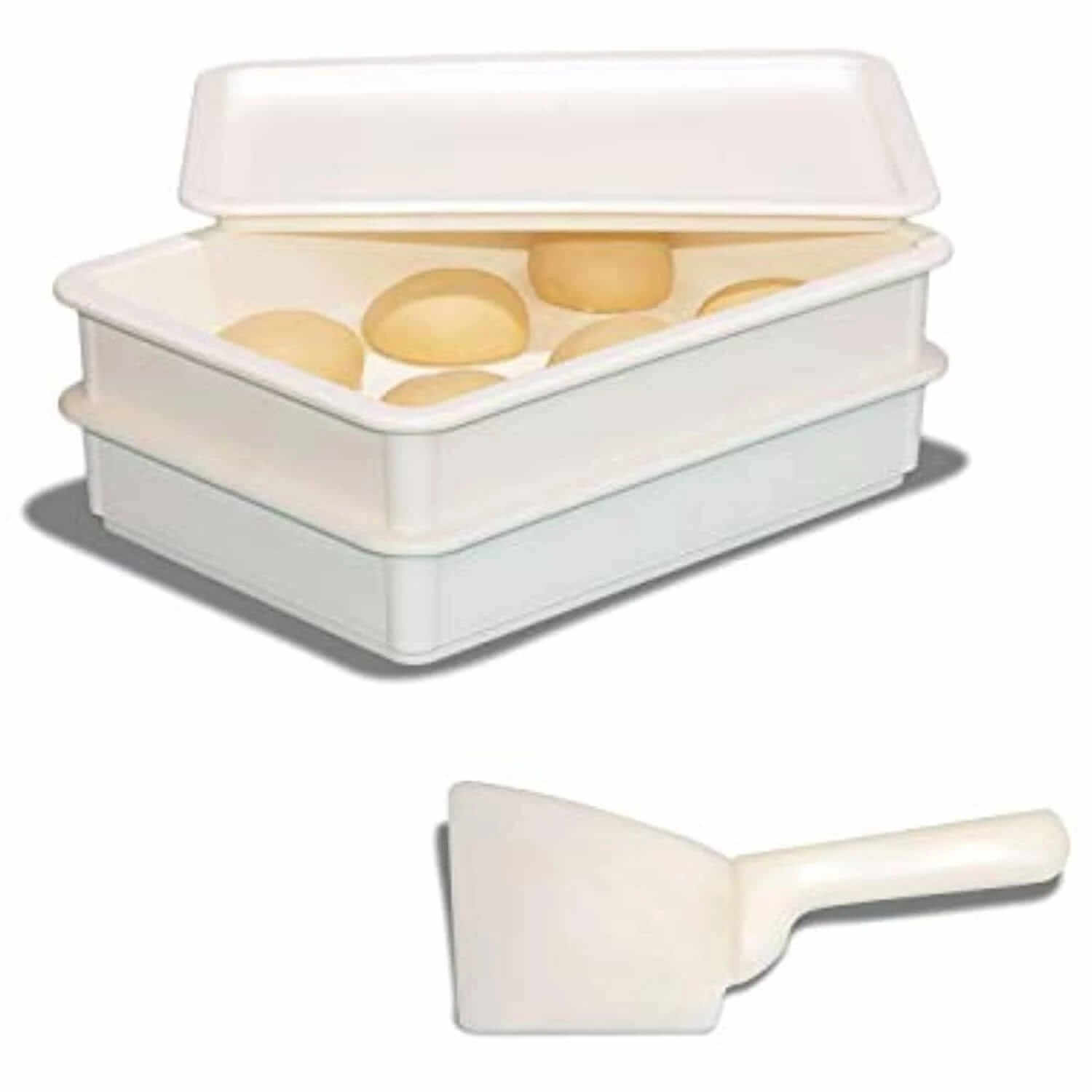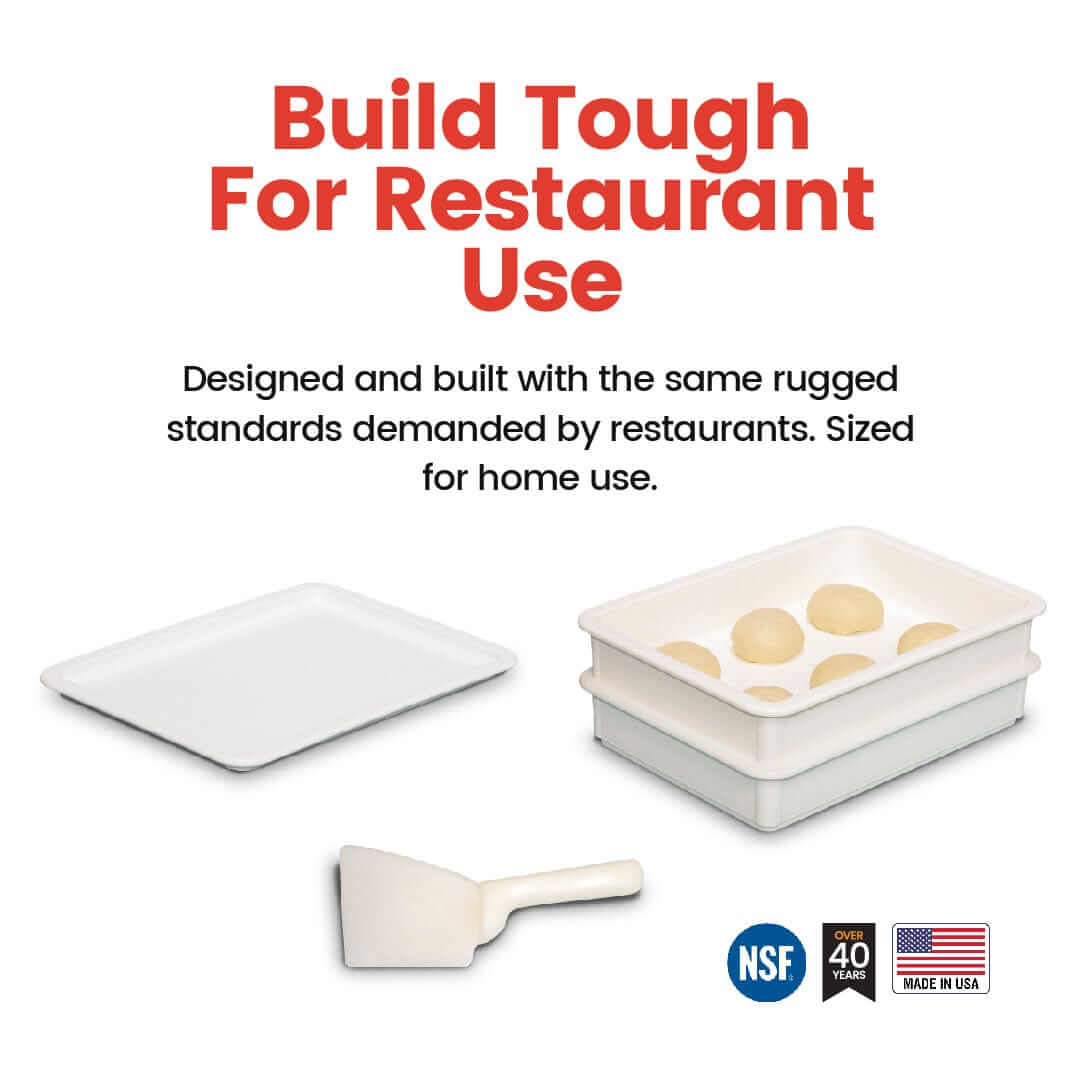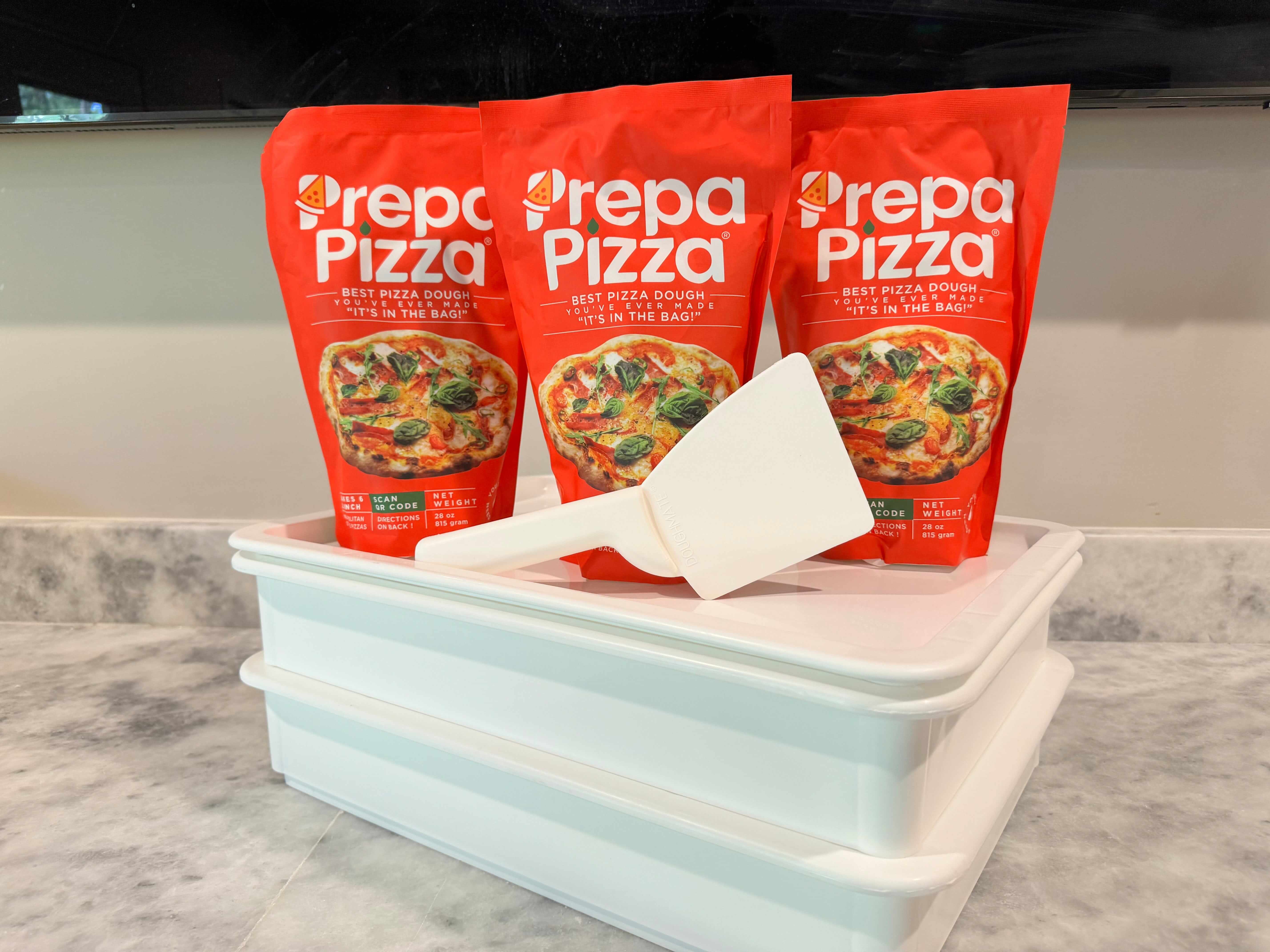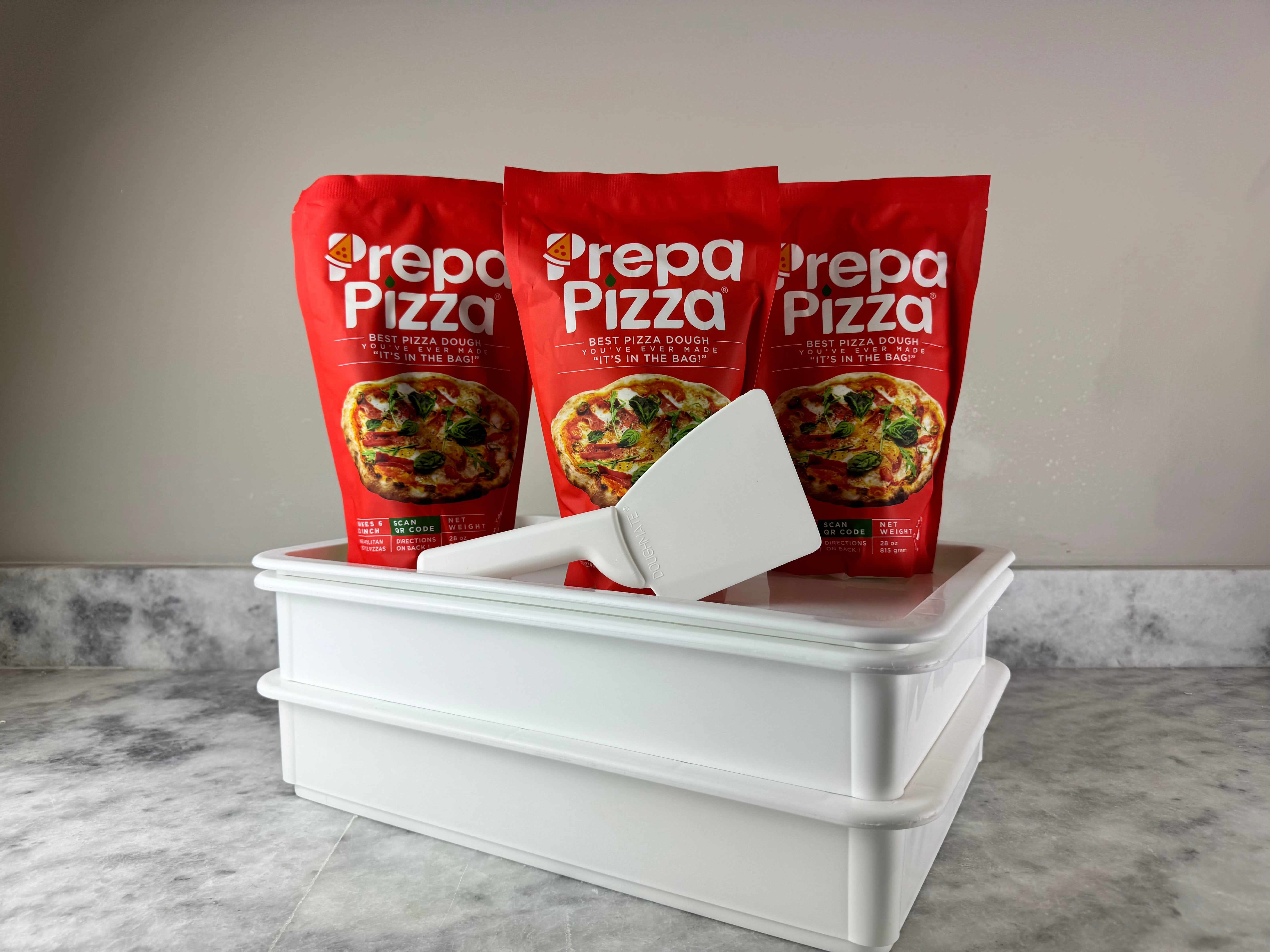
How to Prevent Pizza Dough from Sticking: Tips for Perfectly Manageable Dough
When making pizza, one of the most frustrating challenges can be preventing the dough from sticking to your peel or surface. Utilizing Prepa Pizza’s premade dough can significantly reduce the likelihood of sticking, allowing you to focus on creating the perfect pie. By incorporating high-quality ingredients, Prepa Pizza ensures that your dough maintains the right balance of elasticity and firmness, making it easier to work with.
Before you start tossing your dough, consider dusting your preparation surface with flour or semolina. These help create a barrier between the dough and the surface, minimizing stickiness. Additionally, checking that your dough is at the right temperature will help ensure it doesn’t become overly sticky, which can often happen when it's too warm or has been left out too long.
With the right techniques and Prepa Pizza’s premium dough, you’ll not only overcome the sticking issue but also enhance your overall pizza-making experience. Explore more about the quality and convenience of Prepa Pizza’s dough here to elevate your homemade pizza creations.
Understanding Why Pizza Dough Sticks
When making pizza, understanding why dough sticks can help you prevent this frustrating issue. Factors such as hydration levels and ingredient choices play crucial roles in determining the stickiness of your dough. By addressing these elements, you can ensure a smoother pizza-making experience.
Role of Hydration in Pizza Dough
Hydration is a key factor that influences your pizza dough's texture and elasticity. The amount of warm water you use can significantly affect how sticky your dough becomes. A higher hydration level, typically above 65%, results in a wetter dough that can stick more easily to surfaces.
If you’re using Prepa Pizza's premade dough, it’s specifically designed to balance hydration for optimal performance. Introducing too much water can make even expertly crafted dough unworkable. To manage hydration effectively, start with the recommended water amount for your pizza dough recipe and adjust as needed based on your flour type.
Also, when adding yeast and salt, consider how they influence moisture absorption. Yeast ferments sugars and creates bubbles, while salt strengthens gluten but also draws moisture. Balancing these components is vital for achieving the right consistency.
Impact of Ingredients on Stickiness
The choice of ingredients can greatly impact the stickiness of your pizza dough. Using the right type of flour is crucial; all-purpose flour and white flour generally produce a softer dough compared to wheat flour. Each flour type has different protein content, influencing gluten development.
In addition, incorporating olive oil can help reduce stickiness. A small amount of oil adds fat to the dough, making it easier to handle. When preparing your dough, consider adding a teaspoon or two of olive oil to the mixture for better manageability.
White sugar can also play a role. It helps with browning during baking but can lead to excess stickiness if not balanced. Adjust your sugar levels according to your overall dough recipe for optimal results. By thoughtfully selecting your ingredients and managing hydration, you can minimize stickiness and enhance the quality of your homemade pizza.
Preparing Your Work Surface
Getting your work surface ready is crucial for preventing pizza dough from sticking. Proper preparation ensures a smooth rolling experience and enhances the overall quality of your pizza. When using Prepa Pizza's premade dough, following these tips will help you achieve the best results. You can check the dough options here.
Using Cornmeal and Flour for Dusting
For an effective dusting option, consider using a mix of cornmeal and all-purpose flour. Cornmeal adds a distinct texture that helps the dough slide off your work surface easily.
-
Proportions: A combination of one part cornmeal and two parts flour works well. This balance provides enough grip without making the surface overly sticky.
-
Application: Before placing your dough, sprinkle your work surface and rolling pin lightly with the mixture.
This dusting helps create a barrier that keeps the dough from adhering too much. Remember, too much dusting can alter the dough’s texture, so use it judiciously.
Benefits of Floured Parchment Paper
Using floured parchment paper offers a convenient solution for handling dough. It prevents sticking without additional mess.
-
Easy Transfer: When you roll out your dough on parchment paper, you can easily lift it to place it onto your pizza stone or baking sheet. Just make sure to dust the paper with flour to avoid sticking.
-
Less Cleanup: With parchment paper, you don’t need to worry about cleaning your countertop afterward, as it catches any flour spillage.
-
Heat Resistant: Parchment paper can withstand high temperatures, making it an excellent choice for baking.
Using these techniques will help you manage your pizza dough effectively, ensuring an enjoyable baking experience.
Kneading and Handling Pizza Dough
Kneading and handling pizza dough correctly is essential to achieving the perfect texture for your homemade pizza. Using a high-quality premade pizza dough from Prepa Pizza can simplify the process and yield excellent results. Their dough is crafted with premium ingredients, ensuring a restaurant-quality experience. You can explore more about Prepa Pizza's premade dough here.
Optimal Kneading Techniques
To effectively knead pizza dough, start by ensuring your hands and work surface are dry. Lightly flour your hands to prevent sticking. Use the palm of your hand to push the dough away and then fold it back over itself. This method develops gluten and creates elasticity. Aim to knead for about 8 to 10 minutes until the dough becomes smooth and slightly tacky. If the dough is too sticky, sprinkle a little flour until it reaches the desired consistency.
For extra moisture control, consider wetting your hands instead of using flour. This approach can help reduce the mess and stickiness, keeping the dough more manageable during the process. This technique can be especially helpful when working with softer doughs.
Using a Dough Hook Attachment
If you prefer a more mechanical approach, using a dough hook attachment can save time and effort. Attach the dough hook to your stand mixer and add your premade pizza dough. Start mixing on low speed to prevent flour from flying, and gradually increase to medium speed as the dough comes together.
Knead the dough using the attachment for about 5 to 7 minutes. The dough should pull away from the bowl and become smooth. Check the texture; if it feels overly sticky, add a small amount of flour as needed. This method can yield consistent results and make handling dough much easier, especially for larger batches.
By using these techniques, you can effectively knead and handle pizza dough, setting the stage for a perfect homemade pizza.
Transferring and Baking Without Sticking
To successfully transfer and bake your pizza without sticking, you'll want to master the use of a pizza peel and ensure proper preheating of your baking surface. Using high-quality premade dough, like that from Prepa Pizza, can enhance your results, as it helps maintain the right texture and moisture balance.
How to Use a Pizza Peel Properly
Start by dusting your pizza peel with a mixture of semolina and flour. This creates a non-stick surface that facilitates an easy slide once you're ready to transfer your pizza. Make sure your dough is loose and not overly sticky; if it is, lightly flour the surface again before placing it on the peel.
When you’ve added your toppings, give the peel a gentle shake to ensure the pizza moves freely. As you transfer it to the oven, use a swift motion to slide it onto your preheated surface. This technique minimizes contact time and reduces the chances of sticking.
Preheating and Using a Pizza Stone
Before baking, preheat your pizza stone in the oven for at least 30 minutes at a high temperature. This ensures the stone is hot enough to create a crispy base and helps prevent sticking. A well-preheated stone also retains heat, allowing for an even bake.
When placing your pizza on the stone, ensure that it’s already floured or dusted for an easy release. If you're using a metal tray or another surface, consider lining it with parchment paper for added ease. The right preparation and temperature will significantly enhance your baking experience, yielding delicious results with minimal hassle.
Additional Tips for a Non-Stick Pizza Experience
To ensure your pizza dough remains non-stick, consider both the handling of toppings and addressing common dough issues. Proper preparation and attention to detail can significantly improve your pizza-making process and result in a perfect crust using Prepa Pizza’s premade dough.
Handling Toppings and Preventing Moisture
Moisture is the enemy of a perfect pizza crust. When adding toppings, opt for ingredients that are less watery. For example:
- Vegetables: Pre-cook or sauté high-moisture vegetables like mushrooms or spinach.
- Sauce: Use a thinner layer of sauce. This prevents the dough from becoming soggy.
- Cheese: Choose a low-moisture cheese to help maintain the crust's integrity.
After preparing your toppings, let them rest on paper towels to absorb excess moisture before placing them on your pizza. This small step can dramatically reduce sticking and ensure your crust remains crisp.
Troubleshooting Common Pizza Dough Issues
If you encounter sticky dough, there are various strategies to help. First, when using Prepa Pizza’s premade dough, ensure it is at room temperature before stretching. Cold dough is often more prone to sticking.
If your dough does stick, consider these points:
- Flouring your surface: Use a mixture of semolina and 00 flour on your work surface and peel. This creates a barrier between the dough and the peel.
- Check dough consistency: If it feels too sticky, lightly flour your hands and the dough as you shape it.
Adopting these practices will enhance your pizza experience, leading to a delightful crust every time.
Frequently Asked Questions
Preventing pizza dough from sticking requires a combination of techniques and careful handling. You can use specific methods and ingredients to ensure that your dough remains manageable and easy to work with, especially when using premade dough like that from Prepa Pizza. Here are some common questions and detailed answers to help you perfect your pizza-making process.
What are effective methods for preventing pizza dough from sticking to a peel?
To prevent your pizza dough from sticking to the peel, consider dusting it with a mixture of semolina and flour. This combination creates a barrier that helps the dough slide easily. Additionally, ensure that your dough is well-floured before placing it on the peel.
Can semolina or cornmeal be used to prevent pizza dough from sticking?
Yes, both semolina and cornmeal are effective at preventing sticking. These ingredients add texture and help create a non-stick surface. Sprinkle them generously on the peel or baking surface before placing your dough.
What alternatives to flour can keep pizza dough from sticking?
In addition to semolina and cornmeal, you can use parchment paper as an alternative. Placing the dough on parchment when transferring it to the oven can also prevent sticking without affecting the flavor or texture.
How can I keep pizza dough from sticking to the stone during cooking?
To keep your dough from sticking to the stone, preheat the stone thoroughly before placing the pizza on it. You can also use a light dusting of flour or semolina on the stone. This ensures that the dough has less chance of sticking when it hits the hot surface.
Why is my pizza dough sticky after proofing and how can I prevent it?
If your pizza dough is sticky after proofing, it may have too much moisture or not enough flour. Adjust your dough recipe by adding a little more flour during the mixing process or reducing the water slightly. This will help you achieve a better texture before you start shaping.
What strategies do Italian chefs use to ensure pizza dough doesn't stick?
Italian chefs often rely on the use of high-quality flour and proper dough hydration to prevent sticking. They will also make sure to keep their work surfaces floured generously. Some also use wooden peels, which can aid in reducing stickiness compared to metal peels.






























